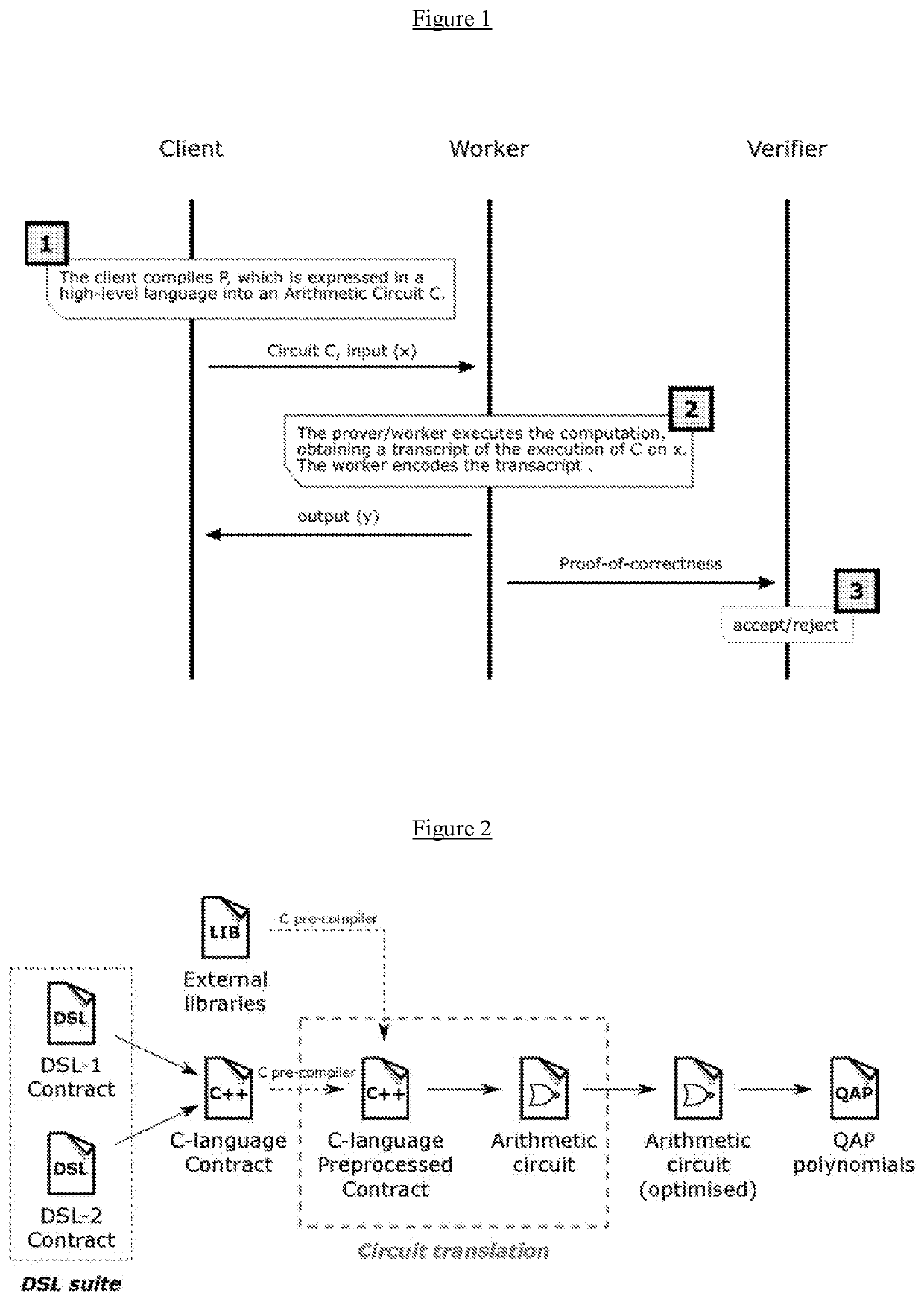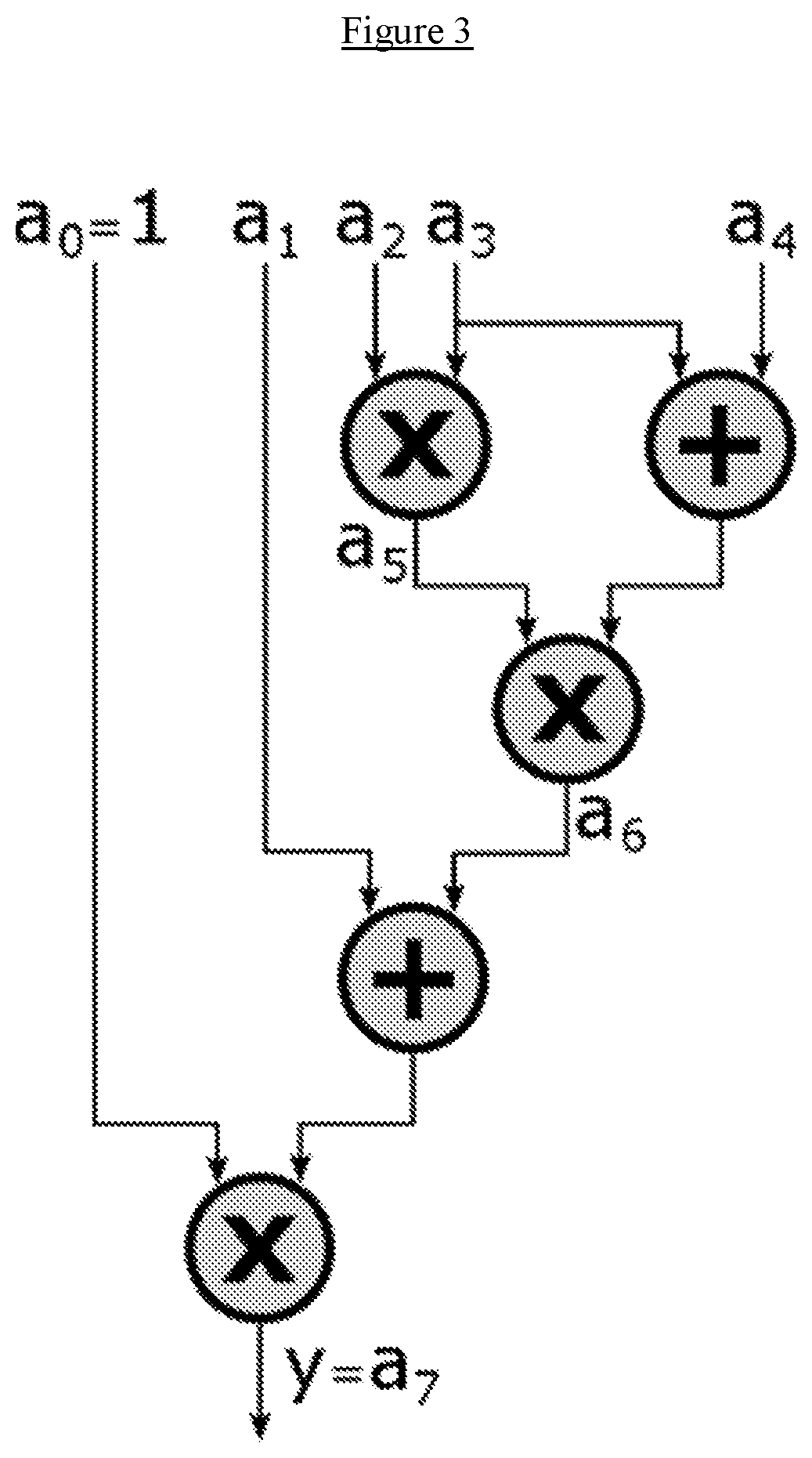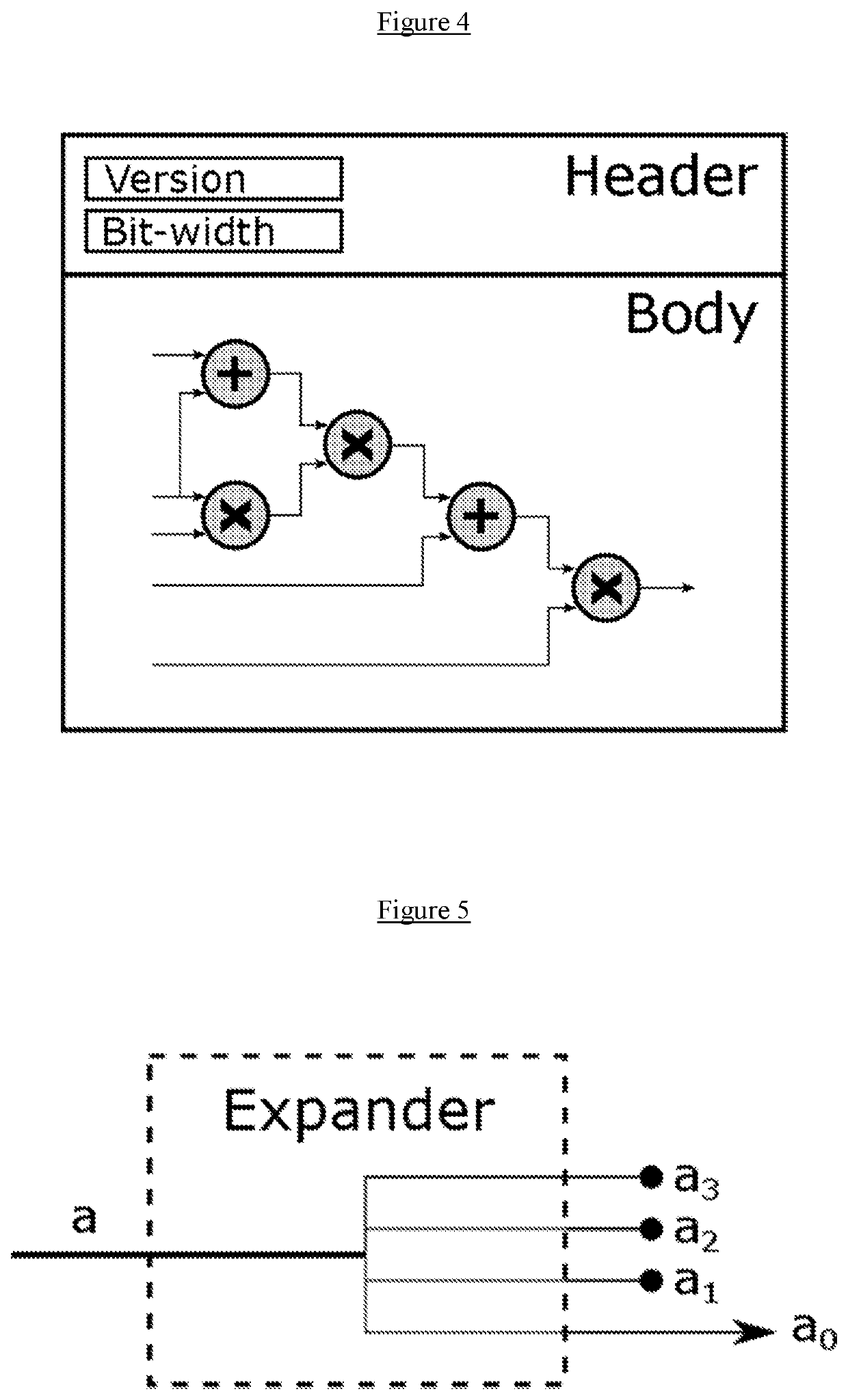Arithmetic enhancement of c-like smart contracts for verifiable computation
a technology of verifiable computation and c-like smart contracts, applied in the field of arithmetic enhancement of c-like smart contracts for verifiable computation, can solve the problems of difficult programming of smart contracts for blockchain implementation, prone to errors, and comparatively few applications that can be created for the blockchain
- Summary
- Abstract
- Description
- Claims
- Application Information
AI Technical Summary
Benefits of technology
Problems solved by technology
Method used
Image
Examples
& example use case
[0067]For our example, consider a protocol which allows users to generate contracts for financial instruments using a Domain Specific Language (DSL). Once the contract has been generated, its execution can be outsourced to untrusted parties (called “workers” or “provers”), while its correctness can be publicly verified. The protocol makes use of cryptographic primitives that ensure:[0068]Completeness, i.e. the honest verifier will be convinced of the validity of the output if the protocol is correctly followed;[0069]Soundness, i.e. no cheating prover can convince the honest verifier about the authenticity of the output;[0070]Zero-knowledge, i.e. no cheating verifier learns anything other than the validity of the output.
[0071]The principal benefits of the protocol are:[0072]Man-in-the-middle attacks are prevented since no communication between the participants is requested.[0073]It makes hard for malicious nodes to tamper with the data due to the use of the blockchain technologies.[0...
PUM
 Login to View More
Login to View More Abstract
Description
Claims
Application Information
 Login to View More
Login to View More - R&D
- Intellectual Property
- Life Sciences
- Materials
- Tech Scout
- Unparalleled Data Quality
- Higher Quality Content
- 60% Fewer Hallucinations
Browse by: Latest US Patents, China's latest patents, Technical Efficacy Thesaurus, Application Domain, Technology Topic, Popular Technical Reports.
© 2025 PatSnap. All rights reserved.Legal|Privacy policy|Modern Slavery Act Transparency Statement|Sitemap|About US| Contact US: help@patsnap.com



